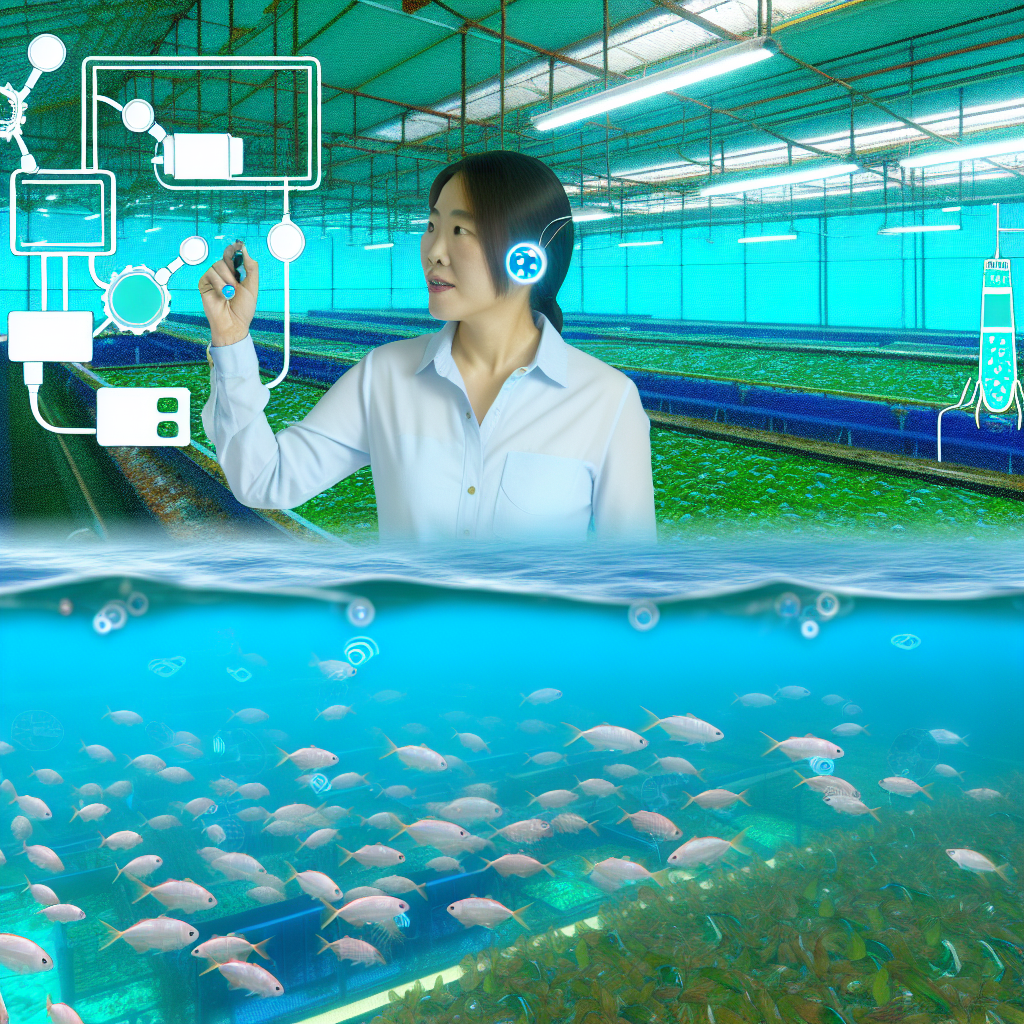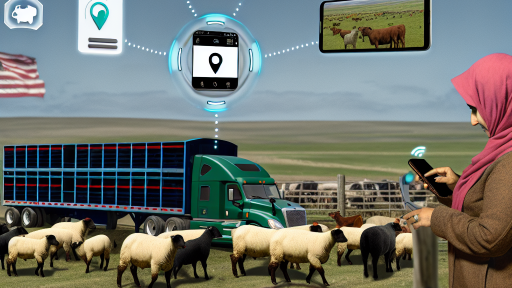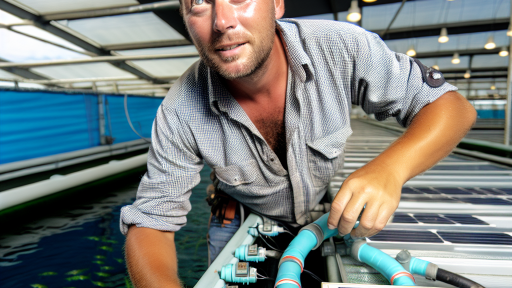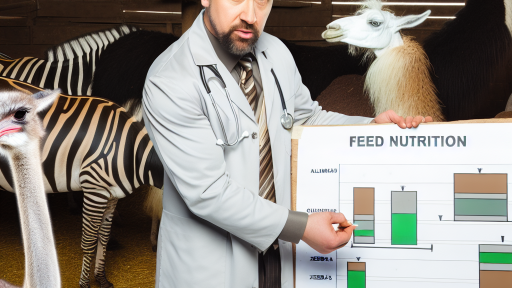Introduction to Aquaculture
Definition of Aquaculture
Aquaculture involves the cultivation of aquatic organisms for food and other products.
This practice includes fish farming, shrimp farming, and seaweed cultivation.
Aquaculture operates in controlled environments, unlike traditional fishing.
Consequently, it provides a reliable source of seafood for a growing population.
Importance of Aquaculture
Aquaculture significantly contributes to global food security.
It helps meet the increasing demand for protein-rich food sources.
Moreover, aquaculture offers economic benefits through job creation.
It plays a vital role in the livelihoods of millions worldwide.
Furthermore, aquaculture reduces pressure on wild fish populations.
Sustainable Practices in Aquaculture
Implementing sustainable practices is crucial for the success of aquaculture.
This approach minimizes environmental impacts while maximizing output.
Innovative technologies lead to more efficient resource management.
Additionally, sustainable practices promote biodiversity in aquatic ecosystems.
Consequently, they enhance the long-term viability of aquaculture.
Current Challenges in Traditional Aquaculture Practices
Environmental Impact
Traditional aquaculture often harms local ecosystems.
Transform Your Agribusiness
Unlock your farm's potential with expert advice tailored to your needs. Get actionable steps that drive real results.
Get StartedFor instance, nutrient pollution affects water quality.
This can result in harmful algal blooms and dead zones.
Additionally, overfishing disrupts biodiversity in surrounding waters.
Resource Inefficiency
Many conventional methods consume high amounts of water and energy.
This leads to increased operational costs and reduced sustainability.
Moreover, feed conversion ratios can be inefficient.
Farmed fish often require more feed than they produce.
Disease Management
Traditional aquaculture faces significant disease challenges.
Close quarters in fish farming promote disease spread.
Many fish farms rely heavily on antibiotics.
This practice raises concerns about antibiotic resistance.
Market Demand and Supply Chain Issues
Increasing global demand for seafood pressures traditional aquaculture.
Unfortunately, diseases and resource inefficiency hinder production capacity.
Supply chains often face interruptions, affecting market availability.
Many producers struggle with fluctuating prices and consumer preferences.
Regulatory Challenges
Aquaculture regulations can be complex and varied across regions.
Adhering to these regulations often imposes hefty costs on growers.
Additionally, changing regulations can create uncertainty in operations.
This unpredictability makes long-term planning and investment difficult.
Overview of Innovative Technologies in Aquaculture
Introduction to Aquaculture Technologies
Aquaculture utilizes advanced technologies to improve efficiency and sustainability.
These technologies revolutionize the way we farm aquatic species.
They ensure healthier ecosystems and produce quality seafood.
Data Analytics and IoT Integration
Data analytics plays a crucial role in modern aquaculture.
Farmers use real-time data to monitor water quality and fish health.
Showcase Your Farming Business
Publish your professional farming services profile on our blog for a one-time fee of $200 and reach a dedicated audience of farmers and agribusiness owners.
Publish Your ProfileFurthermore, IoT devices enable seamless tracking of environmental conditions.
This continuous monitoring helps optimize feeding strategies and growth rates.
Automated Feeding Systems
Automated feeding systems streamline the feeding process.
They reduce waste and improve feed efficiency.
Additionally, these systems adjust feed amounts based on real-time data.
Consequently, farmers achieve better growth rates and lower costs.
Water Quality Management Technologies
Maintaining water quality is vital for successful aquaculture.
Advanced filtration and UV sterilization technologies help maintain clean water.
Moreover, systems can automatically detect and correct imbalances.
This proactive approach leads to healthier fish stocks and better yields.
Genetic Advances in Aquaculture Species
Genetic engineering enhances disease resistance in aquaculture species.
Selective breeding programs produce faster-growing and more resilient fish.
These advancements meet the growing global seafood demand.
Additionally, they contribute to sustainable farming practices.
Virtual Reality and Simulation Training
Virtual reality is emerging as a training tool in aquaculture.
This technology simulates real-world farming scenarios.
As a result, trainees can practice critical skills in a risk-free environment.
Furthermore, simulation training improves the learning curve for operators.
Impacts of Innovative Technologies on Aquaculture
Innovative technologies significantly transform the aquaculture industry.
They not only enhance productivity but also promote sustainability.
As technology continues to evolve, aquaculture will thrive more than ever.
You Might Also Like: Seasonal Care Tips for Sheep and Goats
Impact of IoT and Smart Sensors on Aquaculture Management
Introduction to IoT in Aquaculture
The Internet of Things (IoT) revolutionizes aquaculture management.
It empowers farmers to monitor their operations in real-time.
IoT devices connect various systems for optimal performance.
For instance, sensors can track water quality continuously.
Benefits of Smart Sensors
Smart sensors enhance decision-making processes in aquaculture.
They provide precise data on parameters like temperature and oxygen levels.
This information helps farmers maintain healthy environments.
Furthermore, it minimizes the risk of fish diseases.
Real-Time Monitoring and Alerts
Real-time monitoring is crucial for effective aquaculture management.
Farmers receive instant alerts about critical changes in conditions.
Thus, they can take immediate action to protect their stock.
For example, if oxygen levels drop, systems notify operators instantly.
Case Studies of Successful Implementations
Many aquaculture companies embrace IoT solutions.
Seaside Aquaculture uses sensors to track fish health.
Their implementation led to a significant increase in yield.
GreenWave Fisheries employs IoT for sustainable practices.
This approach improves resource efficiency and reduces waste.
Future Trends in IoT and Aquaculture
The future holds promising advancements in IoT technology.
Showcase Your Farming Business
Publish your professional farming services profile on our blog for a one-time fee of $200 and reach a dedicated audience of farmers and agribusiness owners.
Publish Your ProfileFarmers will likely adopt even more sophisticated sensors.
Integrating AI with IoT will optimize aquaculture further.
This integration allows for predictive analytics to foresee challenges.
Consequently, farmers can implement proactive measures effectively.
Discover More: Improving Livestock Productivity through Genetics
Advanced Breeding Techniques for Disease Resistance
Genomic Selection
Genomic selection accelerates breeding programs significantly.
This technique leverages genomic information to identify favorable traits.
For instance, researchers like Dr. Emily Garcia utilize this method in tilapia breeding.
This approach results in rapid advancements in disease resistance traits.
Marker-Assisted Selection
Marker-assisted selection enhances traditional breeding processes.
It identifies specific genes linked to desirable characteristics.
Breeding programs can, therefore, target these genetic markers effectively.
Organizations like AquaGen have successfully implemented this technique.
Consequently, they have observed improved health in aquaculture species.
Cryopreservation and Genetic Banks
Cryopreservation stores genetic material for future breeding needs.
This method ensures access to diverse genetic resources.
Institutions such as the Global Fish Genomics Project are pioneering this practice.
Preserving genetic diversity helps tackle emerging diseases in aquaculture.
Transgenic Approaches
Transgenic technologies introduce specific genes into aquatic species.
This enables the development of resistance against particular pathogens.
For example, the AquaBounty project has produced genetically modified salmon.
This salmon demonstrates enhanced disease resistance traits.
Collaboration and Research Initiatives
Collaboration between organizations fosters innovative breeding techniques.
Institutes like the WorldFish Center regularly share best practices.
Their initiatives improve the overall health and sustainability of fish stocks.
Moreover, global partnerships enhance research funding and resource sharing.
These collaborative efforts propel advancements in aquaculture health strategies.
Explore Further: Genetic Tools for Enhancing Dairy Production
Sustainable Practices: Recirculating Aquaculture Systems (RAS)
What is RAS?
Recirculating Aquaculture Systems (RAS) revolutionize fish farming.
These systems recycle water within a closed environment.
The process significantly reduces water consumption.
Farmers reuse around 90% of the water.
Benefits of RAS
RAS promotes environmental sustainability.
It minimizes the impact on natural water systems.
Moreover, it provides better control over water quality.
This control leads to healthier fish stocks.
Efficiency in Food Production
RAS systems enhance food production efficiency.
They achieve higher fish densities compared to traditional methods.
This leads to increased yields in smaller spaces.
Ultimately, it helps meet the growing demand for seafood.
Showcase Your Farming Business
Publish your professional farming services profile on our blog for a one-time fee of $200 and reach a dedicated audience of farmers and agribusiness owners.
Publish Your ProfileTechnology Integration
Modern RAS incorporates advanced technologies.
These technologies include automated monitoring systems.
They facilitate precise control over water parameters.
Additionally, biofiltration technologies maintain water purity.
Case Studies Around the World
Many global leaders use RAS successfully.
For example, AquaMaof based in Israel showcases RAS innovation.
They’ve created systems for freshwater and marine fish.
Additionally, Nordic Aquafarms in Norway is pioneering sustainable salmon farming.
These examples exhibit the potential for sustainable aquaculture worldwide.
Gain More Insights: Essential Tips for Exotic Livestock Care

Role of Artificial Intelligence in Monitoring and Data Analysis
Enhancing Data Collection
Artificial intelligence significantly improves data collection in aquaculture.
It automates the gathering of environmental data.
Additionally, AI systems can monitor fish behavior in real-time.
Real-time Monitoring Systems
Real-time monitoring systems enhance operational efficiency.
These systems provide instant alerts for anomalies.
Moreover, they help in maintaining optimal water quality.
Data Analysis and Predictive Analytics
AI excels in analyzing vast amounts of data quickly.
This capability leads to better decision-making processes.
Predictive analytics helps farmers foresee market trends.
Moreover, it can predict fish health issues before they escalate.
Integration with IoT Devices
Artificial intelligence integrates seamlessly with IoT devices.
This integration allows for continuous data flow and insights.
Farmers can access real-time information from anywhere.
Consequently, they can make informed adjustments promptly.
Improving Sustainability Practices
AI contributes to more sustainable aquaculture practices.
For instance, it helps optimize feed consumption.
This optimization reduces waste and environmental impact.
Furthermore, it aids in maintaining biodiversity in aquatic systems.
Emerging Trends in Aquafeed Technology and Nutrition
Evolving Ingredients for Aquafeed
Innovative feed ingredients drive modern aquaculture practices.
More producers incorporate plant-based proteins into their formulations.
These ingredients offer numerous benefits, including sustainability.
Fishmeal alternatives are becoming increasingly popular in aquafeed.
Seaweed and insect meal present unique nutritional profiles.
They contribute to improved health and growth rates in aquatic species.
Precision Nutrition Approaches
Precision nutrition tailors aquafeed to meet specific species needs.
This method enhances efficiency and fish performance significantly.
Advanced data analytics help farmers evaluate feed effectiveness.
Nutritional requirements vary widely among different aquatic species.
Developing targeted feed formulations promotes growth and reduces waste.
Functional Additives in Aquafeed
Functional additives increasingly appear in aquafeed formulations.
Showcase Your Farming Business
Publish your professional farming services profile on our blog for a one-time fee of $200 and reach a dedicated audience of farmers and agribusiness owners.
Publish Your ProfileThese additives aim to boost health and disease resistance in fish.
Probiotics and prebiotics enhance gut health in aquaculture species.
This leads to improved feed conversion rates and overall performance.
Additionally, bioactive compounds can support immune function.
Environmentally Sustainable Feed Practices
Environmental sustainability is crucial for aquaculture developments.
Research focuses on reducing the carbon footprint of aquafeed production.
Utilizing local raw materials cuts transportation emissions.
Employing circular economy principles enhances resource efficiency.
These methods promote healthier oceans and ecosystems.
Technology-Driven Feed Production
Automation and AI revolutionize feed production processes.
Producers now employ precision feeding technologies extensively.
Smart monitoring systems optimize feeding schedules for efficiency.
These technologies help minimize feed waste and lower costs.
Data-driven insights empower decisions for better aquaculture outcomes.
The Role of Biotechnology in Enhancing Aquaculture Production
Introduction to Biotechnology in Aquaculture
Biotechnology plays a significant role in modern aquaculture.
It combines biological science with technology to improve fish farming.
This approach enhances productivity and sustainability within the industry.
Genetic Improvements in Aquaculture
Genetic modification is revolutionizing fish farming techniques.
Scientists engineer fish to grow faster and resist disease.
For example, the AquAdvantage salmon matures more quickly than its wild counterpart.
This not only improves production efficiency but also reduces feed costs.
Biological Controls for Disease Management
Biotechnology also enhances disease management in aquaculture.
Developing vaccines helps protect fish from harmful pathogens.
Immunization programs lead to healthier stocks and reduced mortality rates.
Moreover, probiotics can improve gut health in aquaculture species.
Environmental Sustainability Through Biotechnology
Biotechnology contributes to eco-friendly farming practices.
For instance, researchers create fish strains that utilize feed more efficiently.
Consequently, this reduces waste and environmental pollution.
Additionally, bioremediation techniques help to clean aquaculture water systems.
Future Prospects of Biotechnology in Aquaculture
The future of aquaculture relies heavily on advancements in biotechnology.
Emerging technologies promise innovative solutions to current challenges.
For instance, CRISPR technology allows precise editing of fish genomes.
This could enhance desirable traits such as growth rate and disease resistance.
Continuous research is essential to develop sustainable practices.
Future Prospects of Innovative Technologies in Aquaculture
Potential Advancements in Aquaculture Systems
Emerging technologies are reshaping aquaculture methods.
Automation offers efficiency in feeding and monitoring fish stocks.
For instance, robotic feeders minimize waste while optimizing fish growth.
Similarly, advanced water quality sensors ensure optimal living conditions.
Environmentally Sustainable Practices
Innovative technologies contribute to more sustainable practices in aquaculture.
For example, recirculating aquaculture systems reduce water usage significantly.
Showcase Your Farming Business
Publish your professional farming services profile on our blog for a one-time fee of $200 and reach a dedicated audience of farmers and agribusiness owners.
Publish Your ProfileThese systems also lower the environmental impact of fish farming.
Moreover, biofloc technology improves nutrient recycling in aquaculture.
Smart Data Analytics
Data analytics enhance decision-making in aquaculture operations.
Farmers can utilize data to predict growth rates and health issues.
This proactive approach leads to better resource management.
Furthermore, machine learning algorithms can optimize feeding schedules.
Consumer Awareness and Transparency
Innovations also foster transparency in seafood production.
Blockchain technology can track fish from farm to table.
This ensures ethical sourcing and boosts consumer confidence.
As a result, consumers are more informed about their seafood choices.
Collaboration and Innovation Partnerships
The future of aquaculture requires collaboration between stakeholders.
Partnerships between tech companies and fish farmers are essential.
Moreover, academic institutions can drive research and development efforts.
Such collaborations can lead to groundbreaking advancements in the field.
Additional Resources
Emmanuelle Soubeyran on LinkedIn: #resinter
The role of digital technologies in supporting and improving fishery …




